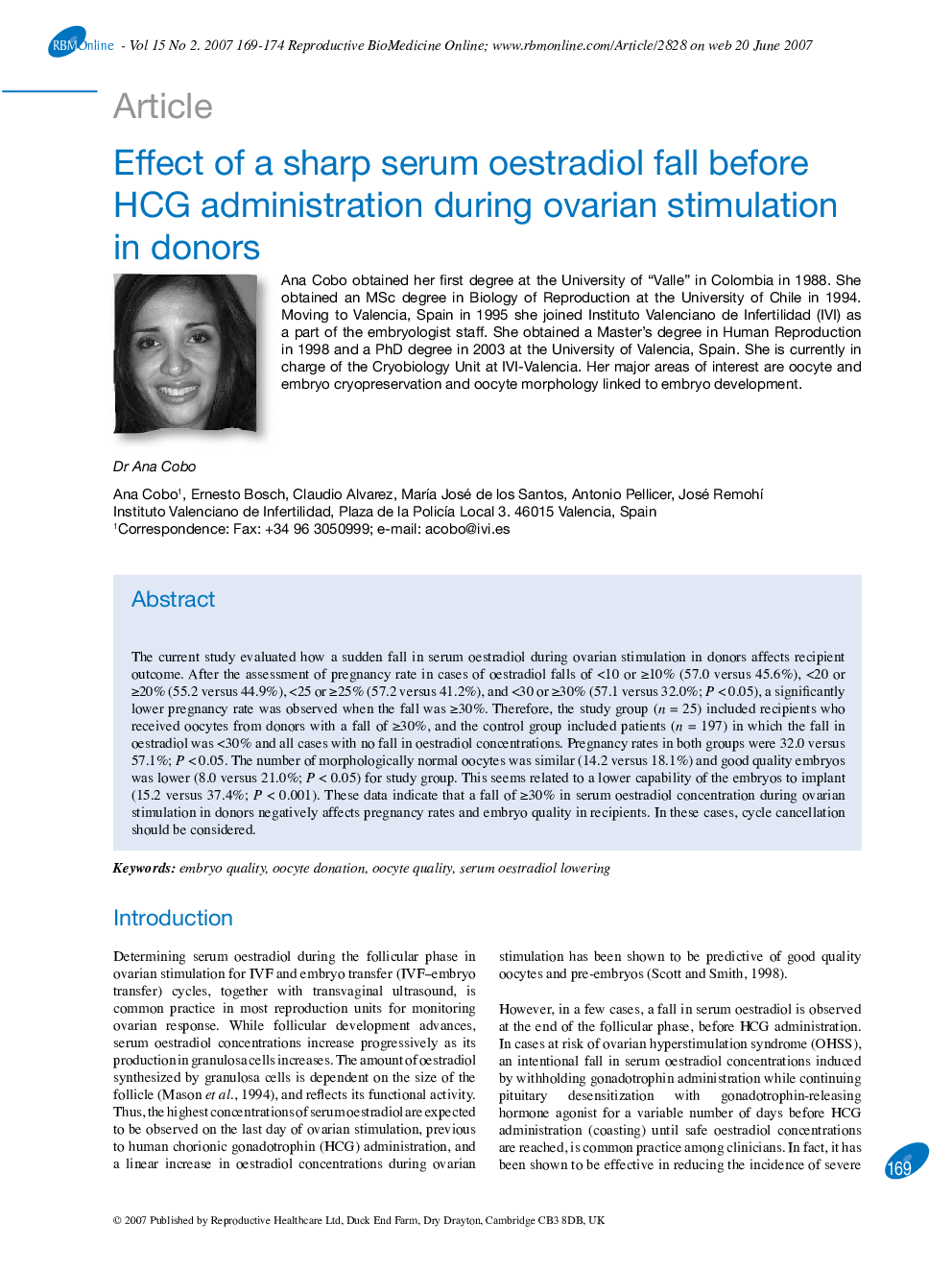| Article ID | Journal | Published Year | Pages | File Type |
|---|---|---|---|---|
| 3972629 | Reproductive BioMedicine Online | 2007 | 6 Pages |
The current study evaluated how a sudden fall in serum oestradiol during ovarian stimulation in donors affects recipient outcome. After the assessment of pregnancy rate in cases of oestradiol falls of <10 or ≥10% (57.0 versus 45.6%), <20 or ≥20% (55.2 versus 44.9%), <25 or ≥25% (57.2 versus 41.2%), and <30 or ≥30% (57.1 versus 32.0%; P < 0.05), a significantly lower pregnancy rate was observed when the fall was ≥30%. Therefore, the study group (n = 25) included recipients who received oocytes from donors with a fall of ≥30%, and the control group included patients (n = 197) in which the fall in oestradiol was <30% and all cases with no fall in oestradiol concentrations. Pregnancy rates in both groups were 32.0 versus 57.1%; P < 0.05. The number of morphologically normal oocytes was similar (14.2 versus 18.1%) and good quality embryos was lower (8.0 versus 21.0%; P < 0.05) for study group. This seems related to a lower capability of the embryos to implant (15.2 versus 37.4%; P < 0.001). These data indicate that a fall of ≥30% in serum oestradiol concentration during ovarian stimulation in donors negatively affects pregnancy rates and embryo quality in recipients. In these cases, cycle cancellation should be considered.
